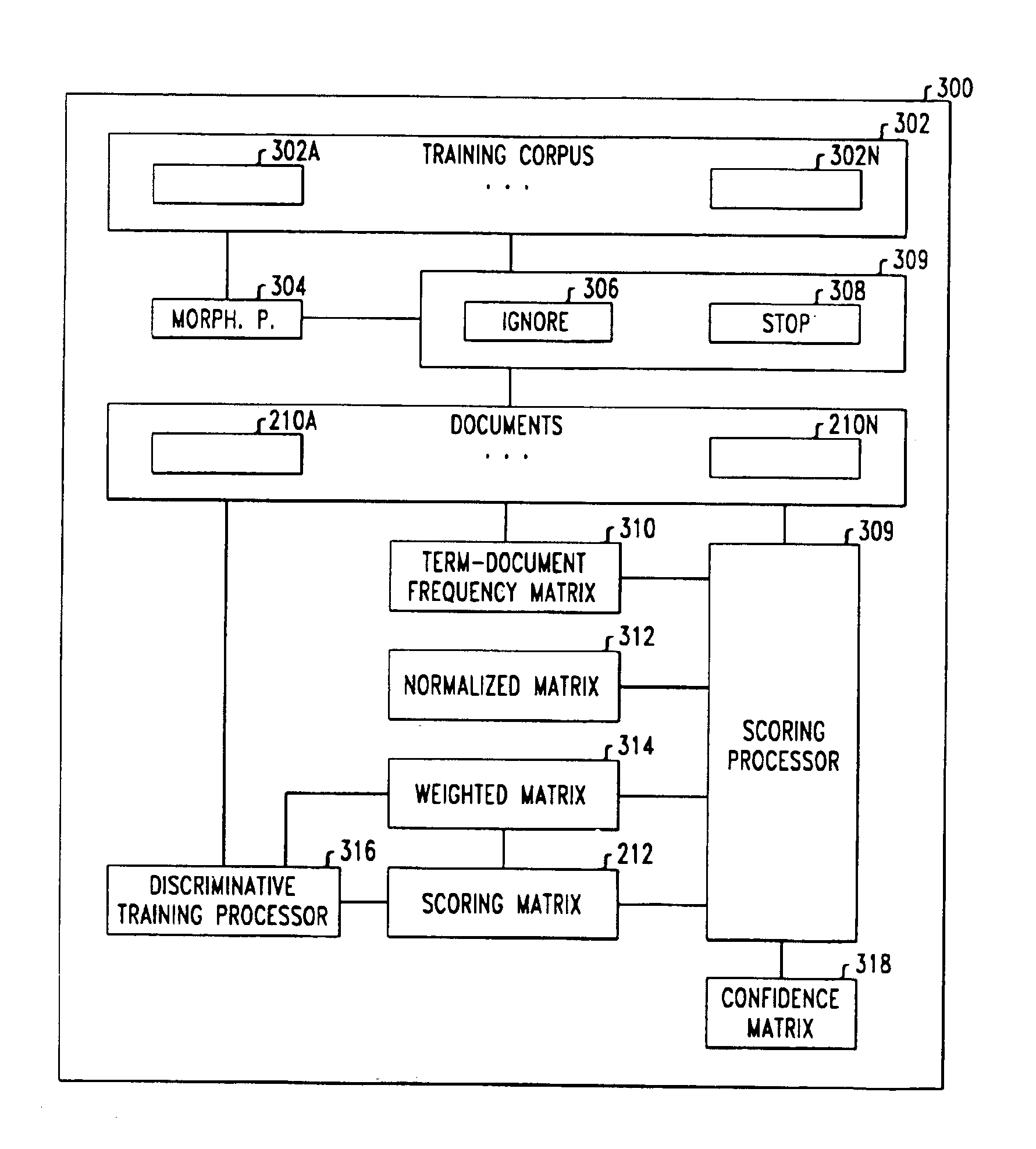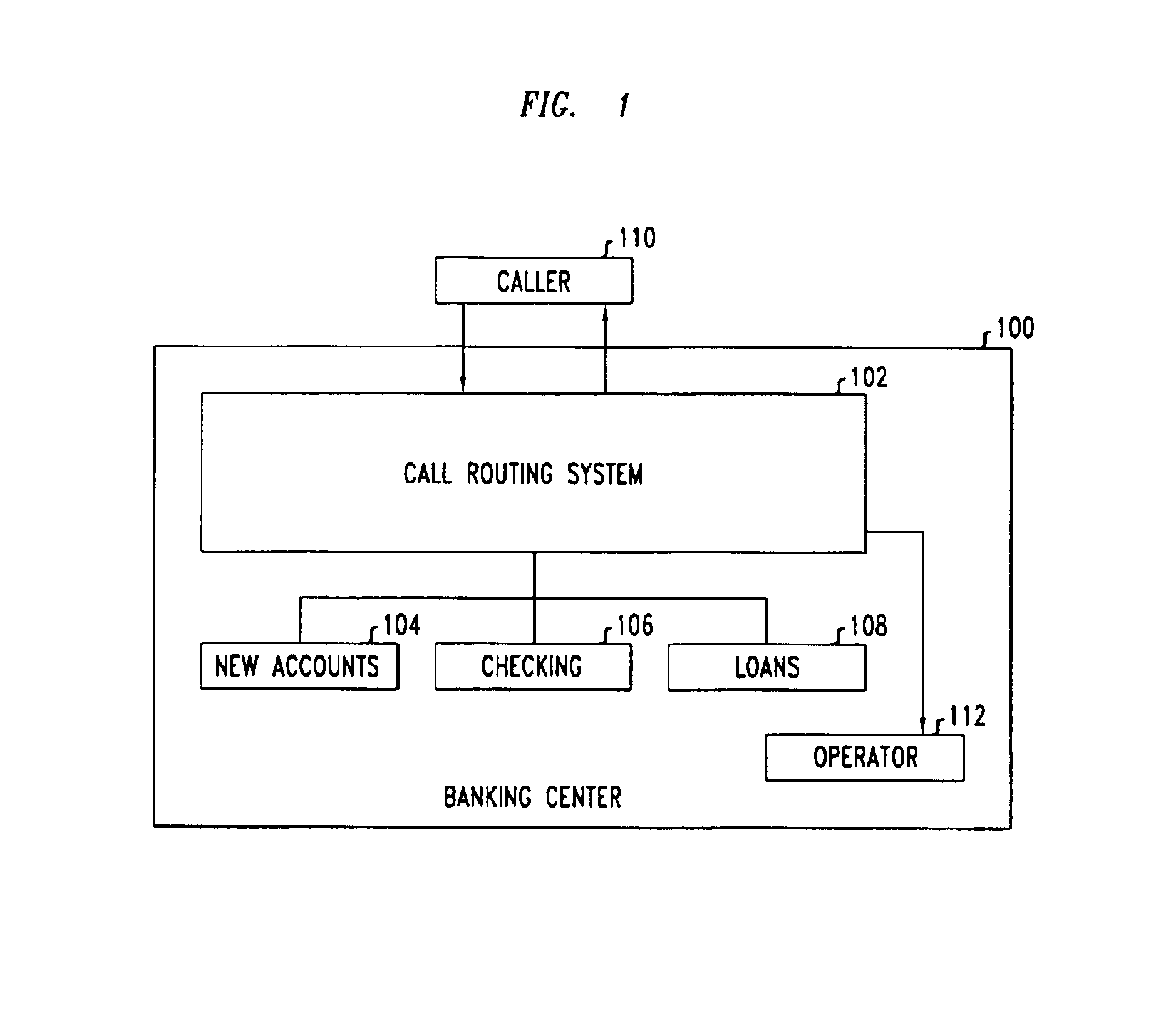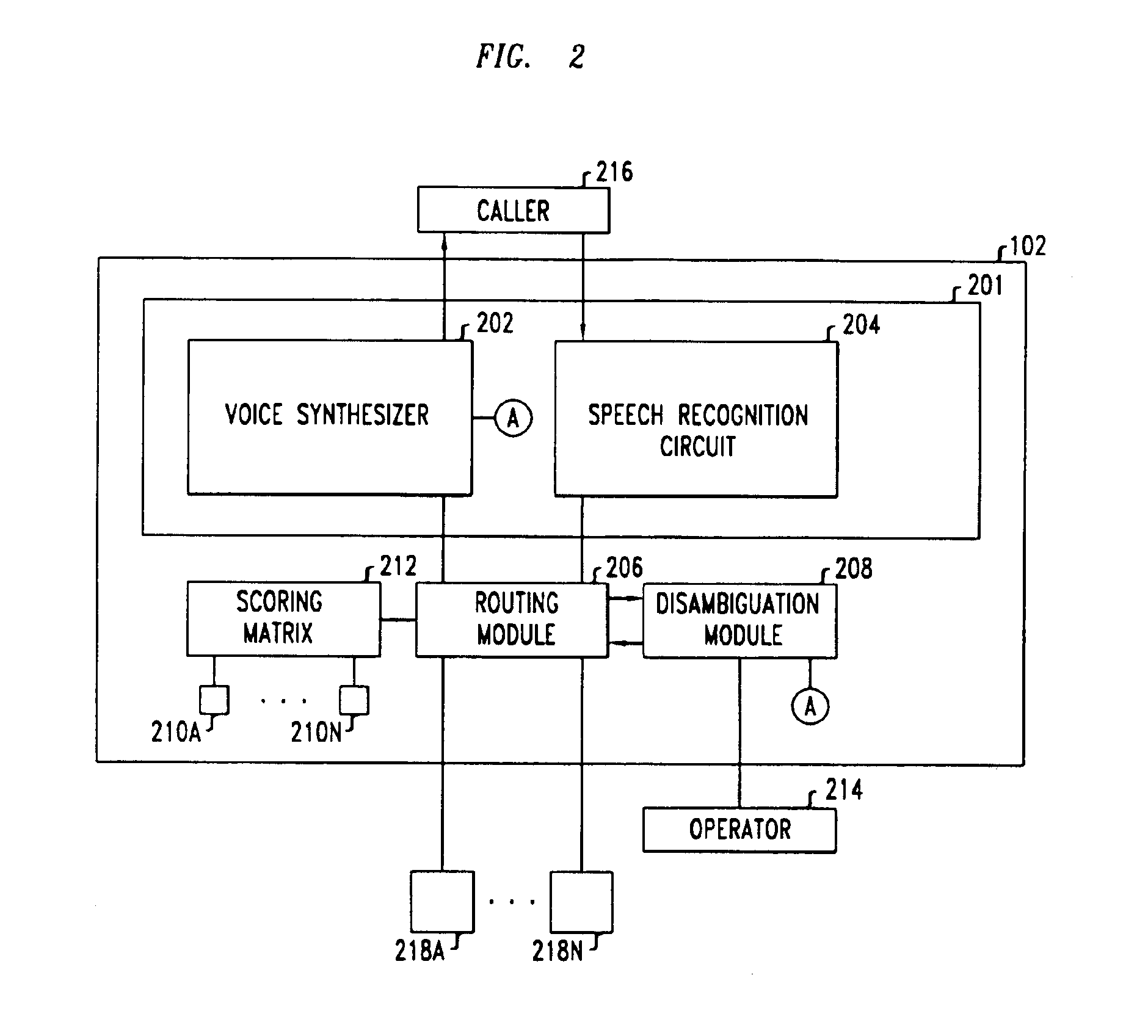Method and apparatus using discriminative training in natural language call routing and document retrieval
a natural language and document retrieval technology, applied in the field of natural language understanding, can solve the problems of significant obstacles to such a system, caller dissatisfaction with many of the presently used automated routing systems, and high cost, so as to improve the subsequent classification of user's natural language based requests, improve discrimination, and improve the effect of discrimination
- Summary
- Abstract
- Description
- Claims
- Application Information
AI Technical Summary
Benefits of technology
Problems solved by technology
Method used
Image
Examples
Embodiment Construction
Call Routing Overview
[0019]In vector-based natural language call routing, call routing is treated as an instance of document routing, where a collection of labeled documents is used for training and the task is to judge the relevance of a set of test documents. Each destination in the call center is treated as a collection of documents (transcriptions of calls routed to that destination), and a new caller request is evaluated in terms of relevance to each destination.
[0020]Specifically, as is fully familiar to those of ordinary skill in the art, the training process involves constructing a routing matrix R. Each document (customer utterances within a caller session) is first passed through morphological processing where the root forms of words are extracted. A list of ignore words are eliminated and a list of stop words are replaced with place holders. Then n-grams are extracted, specifically unigrams, bigrams and trigrams. In accordance with one illustrative embodiment of the prese...
PUM
 Login to View More
Login to View More Abstract
Description
Claims
Application Information
 Login to View More
Login to View More - R&D
- Intellectual Property
- Life Sciences
- Materials
- Tech Scout
- Unparalleled Data Quality
- Higher Quality Content
- 60% Fewer Hallucinations
Browse by: Latest US Patents, China's latest patents, Technical Efficacy Thesaurus, Application Domain, Technology Topic, Popular Technical Reports.
© 2025 PatSnap. All rights reserved.Legal|Privacy policy|Modern Slavery Act Transparency Statement|Sitemap|About US| Contact US: help@patsnap.com



